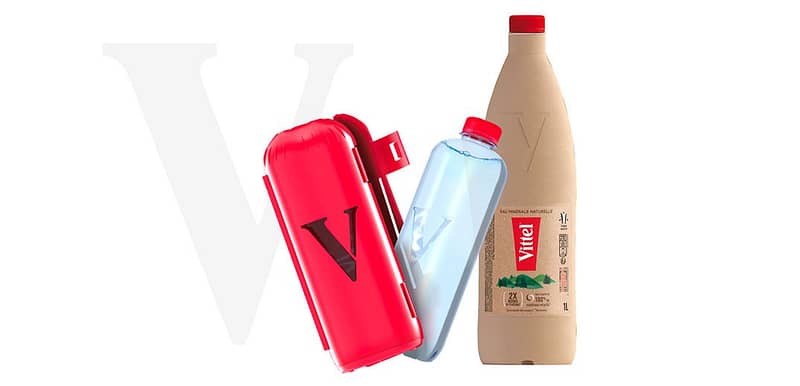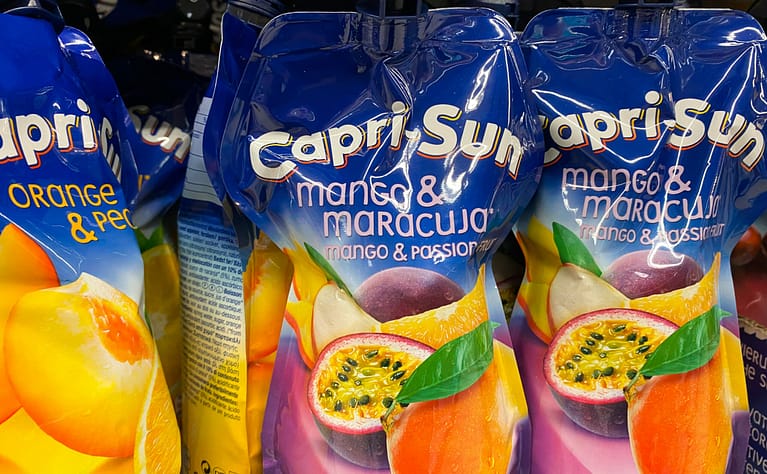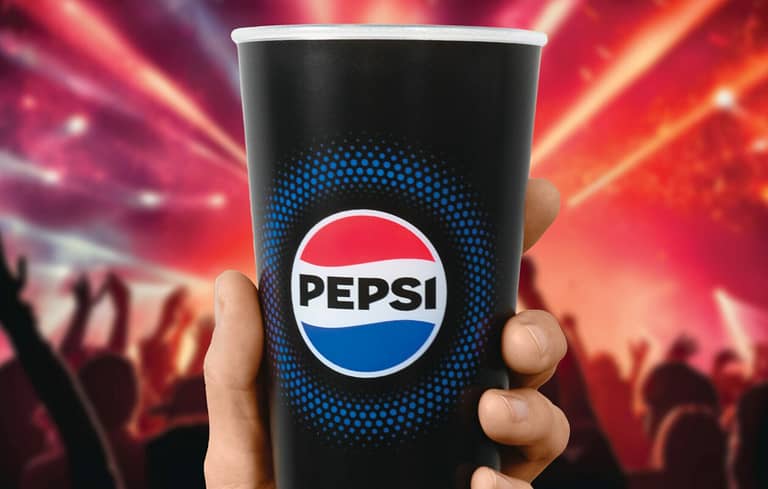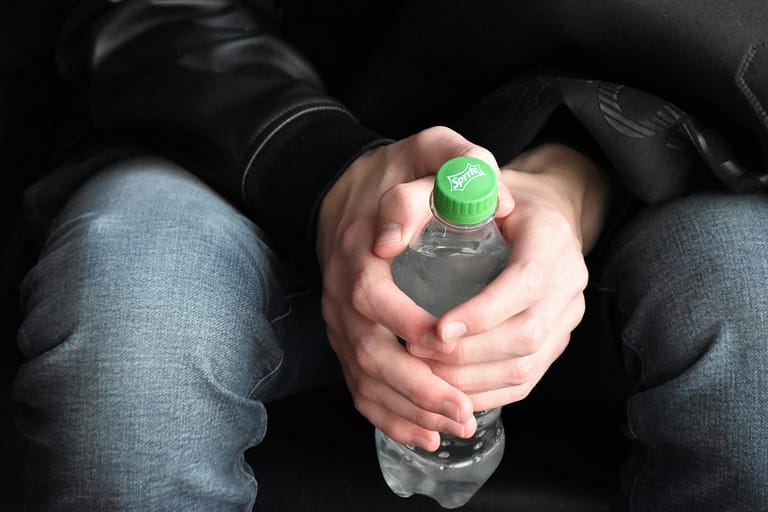Photo source: Nestle
Hybrid and combi bottle: Nestlé breaks new ground in plastic reduction.
Thomas Reiner | 20.08.2021
Even beyond strict mono-material approachs, there are intelligent solutions for the sustainable use of plastic. Nestlé is launching two clever innovations for Vittel: the GO system combines a reusable hard-shell protective cover with thin refill pouches. The hybrid solution “Eco Bottle” combines an ultra-thin plastic bottle with an easily detachable, fiber-based “outer packaging.” These examples show how to reduce plastic use to its essential element: Protection! The question remains whether the consumer will understand the hybrid system and go along with it.
Nestlé is enriching the beverage segment with two clever packaging innovations: A “combi-solution” of a reusable tray and recyclable refill, and a “hybrid system” that combines an ultra-thin plastic bottle made from recycled material with an easily detachable, fiber-based wrapper made from recycled material.
The new solutions are good examples of how to intelligently limit the use of plastic to its core function without loss of functionality: Product protection. With its solutions, however, Nestlé also shows how creatively and resolutely the plastics issue can be approached.
With the hybrid solution in particular, the exciting question now is whether consumers will (be able to) follow suit. This is because they have to provide the new system and separate the two packaging components using a patented tear-off strip and dispose of them separately.
The GO “combined solution
Nestlé uses the GO system with its Vittel mineral water brand.
- The system consists of a reusable hard-shell protective sleeve designed to hold 50-cl refills. As a result, the overall packaging uses 40 percent less plastic than a conventional 50-cl Vittel bottle.
- Nestlé has gone to great lengths to make the refills with as little plastic as possible. This makes them very flexible and lightweight.
- But that same flexibility also means that the “insertable” refills cannot be used without the reusable protective container. This limits the use of the pack, respectively the consumption of the water. It is a solution for “at home”. To go the system works poorly.
The “hybrid solution” Eco Bottle
The Eco Bottle is a recyclable 1-liter hybrid bottle. It is also used by Nestlé for its Vittel brands.
- The “inner packaging” consists of an ultra-thin plastic bottle made entirely of recycled material. It reportedly requires 50 percent less plastic to manufacture than a traditional 1-liter bottle.
- The “outer packaging” is a fiber-based material made from 100 percent recycled cardboard and old newspapers surrounding the inner plastic layer.
- Proprietary technologies enable the plastic and fiber layers to be securely bonded. The result is a functional, robust water bottle that does not require consumers to take extra care when using it.
- To enable the two packaging components to be easily separated for household disposal, Nestlé uses a novel, patented tear-off strip. It is intended not only to guarantee consumers easy separability, but also to improve their “recycling experience”.
Innovation through cooperation and special funding
To develop the two packaging innovations, Nestlé cooperated with the Californian start-up “Ecologic Brands,” which specializes in ecological packaging design and has been owned by the U.S. manufacturing solutions provider Jabil since January.
At Nestlé itself, experts from Nestlé’s Water Research and Development Center in Vittel, France, were dedicated to the project. The work was made possible through special funding from Nestlé’s internal R&D initiative, Shark Tank.
Learnings
Consumer testing of the GO Bottle and Eco Bottle started in France in July 2021. Both innovations are part of the company’s efforts to reduce the use of virgin plastics by one-third by 2025.
Both “Go” and “Eco Bottle” are strong examples of reducing plastic to its essentials: The protective function. Both innovations also show the determination and creativity with which the company is trying everything it can to reduce plastic use.
What’s also exciting about the bottles is that they show examples of innovation beyond the strict mono-material solution. There is no sin in using more than one material – if the materials can be easily separated after use and returned to the cycle, each on its own path.
Equally exciting, however, is whether consumers will accept, understand and properly use the solutions. With the Eco-Bottle in particular, they need to recognize and understand the hybrid system. Dealing with packaging that is to be separated close to the household after use is still unfamiliar and therefore needs to be “learned,” despite the patented tear-off strip.




